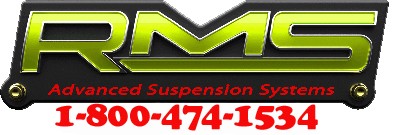Shock Information
Shocks Choices in Plain English
We offer choices of two different brands and two different lengths with our suspension kits, so which do you choose?
Shock Length
First, the term "Ride Height" is important. We base our ride height measurements from the bottom of the k frame to the floor, which is comparable with our frame or the stock k frame. This measurement was 6" originally, and this is what we refer to as "Stock height".
For length, the two different shock lengths we use are very close to each other and the difference is small. If you plan to run more of a stock ride height, the longer "Stock Height" shocks will give you a bit more ride height, so at a more traditional height the shock will be operating in the center of it's travel range, which is preferred.
If you plan on your car being lower, around 2" lower than stock, the shorter "Lowered" shock will be in the center of it's travel range and work a bit better.
Overall, the "Stock height" shock will work fine an inch or so lower than stock with no problems at all. The shorter shock is an improvement at lower ride heights around 2" lower than stock.
Because our suspension geometry is excellent throughout the travel range, having "level" control arms is not important. Lowering a car with drop spindles not only often requires different brakes, you can also run into rim/tire and tie rod clearance issues, and most importantly, the suspension will be able to travel upwards enough that the bottom of the car can hit the ground. Provided the suspension geometry allows it, lowering with shocks is a better, safer option that can easily and cheaply be changed by swapping out shocks if desired.
Ridetech or Viking Shocks?
Viking shocks are a twin tube design. The inner cylinder is where the piston and shaft move up and down. The outer cylinder serves as a reservoir for the hydraulic fluid. There are fluid valves in the piston and in a base valve. The base valve controls fluid flow between both cylinders and provides some of the damping force. The valves in the piston control most of the damping. Low pressure Nitrogen gas is typically added to replace any oxygen air. The effect lessens aeration of the fluid and performance fade.
Ridetech shocks are a mono-tube design. The single cylinder is divided into sections: A fluid area and a gas chamber. The piston and shaft move in the fluid portion. It uses a single fluid valve assembly in the piston. The diameter of the single working cylinder and piston valve is larger than in a twin tube which provides better control. There is no need for an air or gas in the fluid area so the valve can operate more responsively and without any aeration or performance fade. The high pressure gas chamber is separated from the fluid area by a floating piston & seal. That provides an expansion area for the excess fluid movement during the compression stroke. On more aggressive movement the floating piston is pushed further into the gas chamber which increases gas pressure quickly and provides additional damping force.
Overall, if you plan on racing, drag or autocross often, the double adjustable Vikings can allow more tuning adjustment for tricky situations with a mild loss in ride quality. If you plan on occasional autox fun and mostly a nice handling street car, the high pressure Ridetech's will provide excellent control and unbeatable ride quality even in lowered cars on rough roads.

